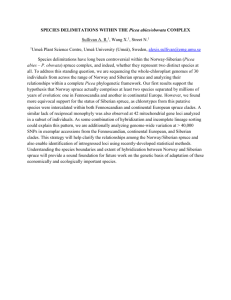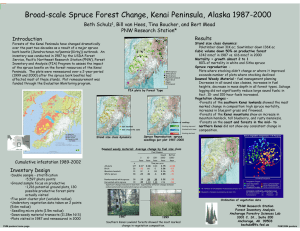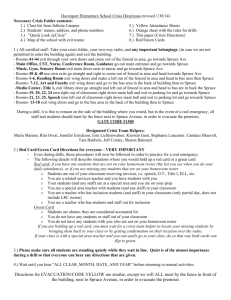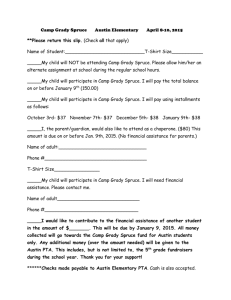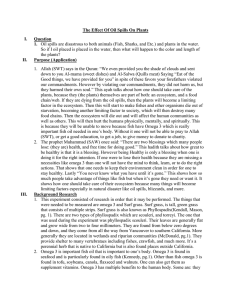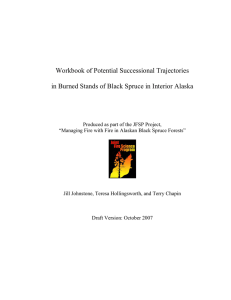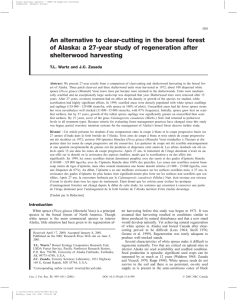Climate-induced Shifts in Fire Frequency, and Resulting Effects on
advertisement
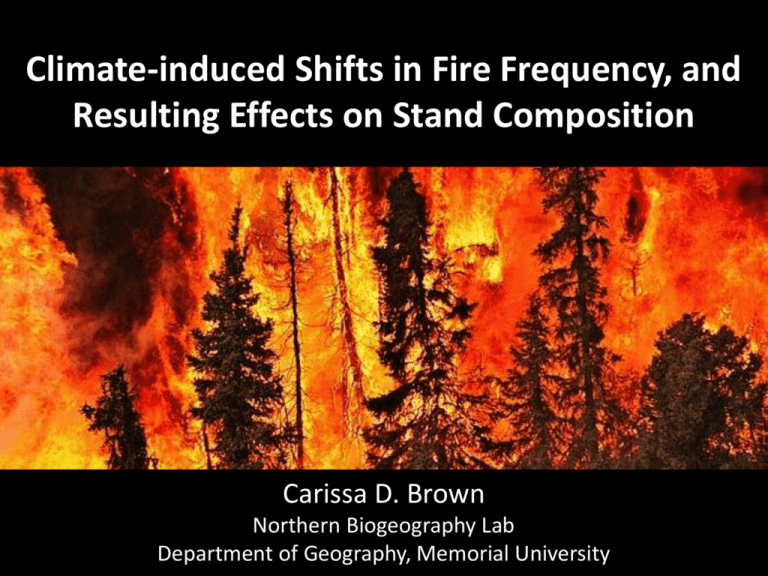
Climate-induced Shifts in Fire Frequency, and Resulting Effects on Stand Composition Carissa D. Brown Northern Biogeography Lab Department of Geography, Memorial University Black spruce (Picea mariana) Fire drives secondary succession and species distribution in boreal forests Fire drives secondary succession and species distribution in boreal forests Short window of opportunity Temperature trends (1960-2009) Burrows et al. 2011 Science; Chapin et al. 2005 Science Climate-fire regimes Ratio of 3xCO2 / 1xCO2 area burned: Flannigan et al. 2005 Climate-fire-succession Balshi et al. 2009 Kasischke and Turetsky 2006 Fire drives secondary succession and species distribution in boreal forests What happens if fire regimes change? How will changes in fire-climate interactions effect black spruce distribution? 1991 1990 1991 2005 1990 longinterval fire shortinterval fire mature forest mature forest long-interval fire short-interval fire Post-fire colonisation: is seed available? mature forest long-interval burn short-interval burn Seed availability Number of viable seeds/m2/year 8 6 4 2 0 mature forest long interval LI Fire history short interval SI Brown and Johnstone, 2012, For. Ecol. Man. Will seed germinate and survive? Number of emerged seedlings Black spruce emergence Fire history Brown and Johnstone, 2012, For. Ecol. Man. Closely timed fires short-circuit regeneration cycles long fire return interval seed availability establishment short seed growth and survival A failure in two parts 1. Lack of seed 2. Unsuitable substrate A failure in two parts Long-term disruption Indirect climate effects caused by a change to the disturbance regime may initiate vegetation shifts of a larger magnitude or opposite direction than would happen due to climate alone mammal Carbon storage organic horizon 1990/91 2005 wood mature forest long-interval burn Fire history short-interval burn How will shifting fire regimes influence tree distributions in the boreal forest? If serotiny loses its advantage (ecosystems become less resilient), what will succeed? The prediction Regions that have experienced a novel disturbance regime will become more suitable for alternative tree species dominance Black spruce ecosystems Eagle Plains, Yukon Dalton Complex, Alaska Taylor Complex, Alaska Boundary Fire, Alaska Future scenarios for successional shifts historic regime black spruce self-replacement severity frequency BS seed severity frequency In the absence of seed limitation BS seed moisture Current distributions Black spruce Current distributions Black spruce White spruce Current distributions Black spruce White spruce Paper birch Black spruce White spruce Paper birch 50 km Shifting regimes in Labrador ACKNOWLEDGEMENTS Dr. Jill Johnstone, University of Saskatchewan …and many, many field assistants, labmates, and colleagues. Threshold for recovery: 50 – 150 years Thresholds for stand recovery 5 High severity fire (good post-fire seedbed) Seedling density . m2 4 3 Range of seed requirements 2 Low severity fire (poor post-fire seedbed) 1 Stand recovery to 4000 trees/ha 0 0 50 100 150 200 250 Mean stand age Viglas, Brown, et al. in review, Can. J. Forest Research Patterns between species: Alaska Alaskan birch Number of seedlings Black spruce Soil moisture (%) Species-specific optimal seed bed conditions

